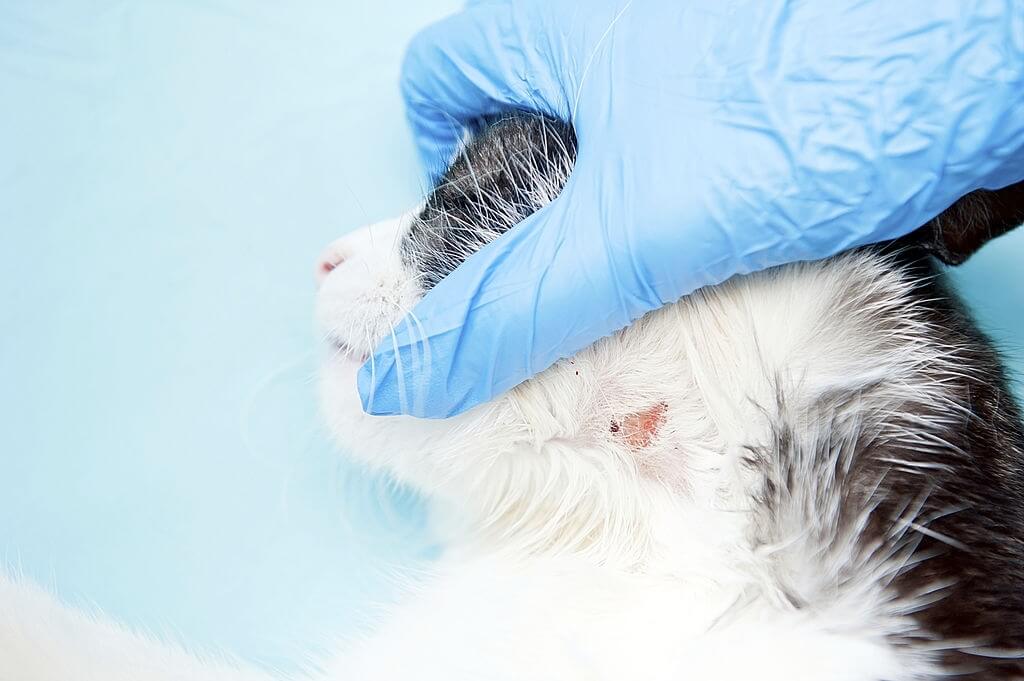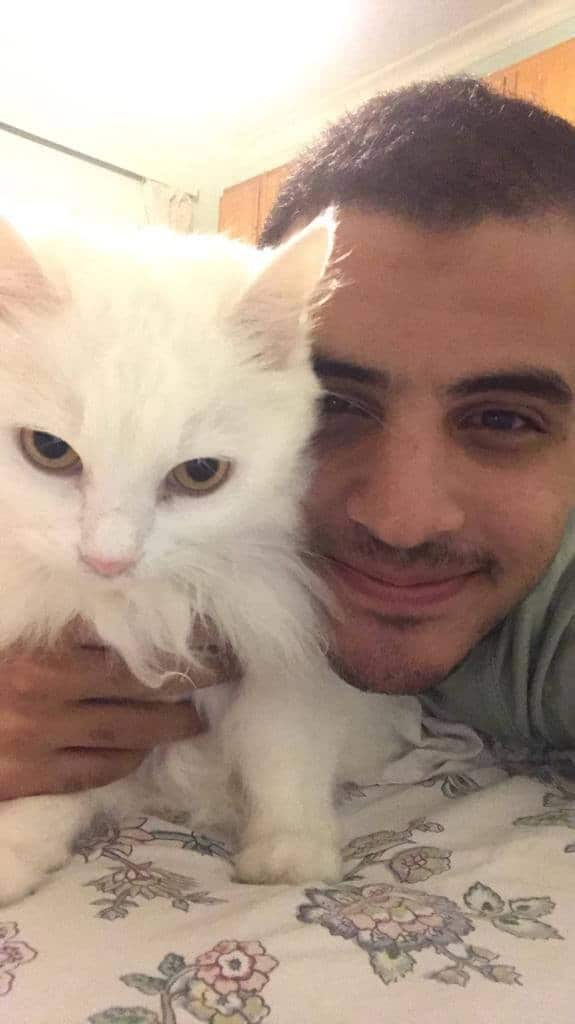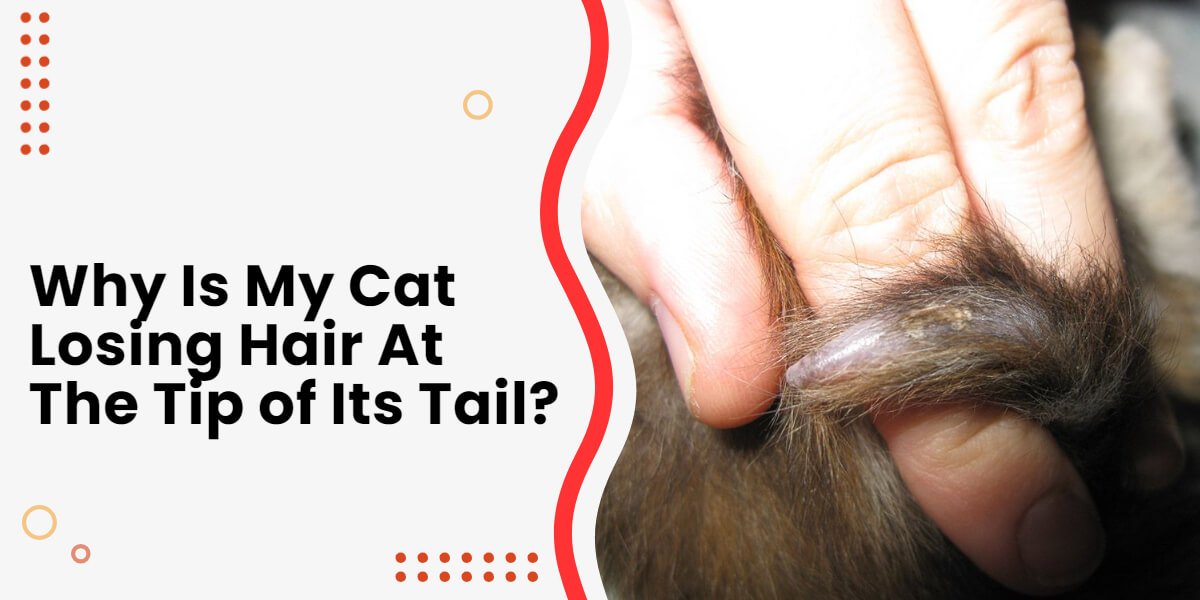Is your feline friend experiencing an unexpected hair loss problem at the tip of its tail? Your cat’s fur tells a story of its overall health, and when it comes to their tail, any hair loss can be concerning. A healthy coat should be glossy and sleek, while the skin should be supple and clear. However, when your cat experiences hair loss specifically at the tail’s tip, it might be a cause for worry.
Understanding the significance of your cat’s skin and fur health is crucial, not just for aesthetics but for their well-being too. Whether it’s a slight thinning or noticeable bald patches, tail hair loss can signal various underlying issues that need attention. While internal health and nutrition play a vital role, external care and grooming are equally essential to maintaining a clean, tangle-free fur coat.
If you’ve noticed your furry companion facing this concern, don’t worry! In this article, we’ll delve into the reasons behind cat tail hair loss at the tip and explore effective strategies to address and manage this issue. Keep reading to learn more about how to keep your feline friend’s tail tip in top-notch condition!
Table of Contents
Cat Tail Hair Loss at The Tip
Cat tail hair loss at the tip can result from various causes, such as over-grooming, allergies, parasites, infections, or injury. It’s essential to observe the area for any signs of irritation, redness, swelling, or discharge, as these might indicate an underlying problem. If the hair loss persists or if you notice any concerning symptoms, consulting a veterinarian can help identify the cause and determine appropriate treatment to address the issue affecting your cat’s tail.
1. Parasites

Parasites can cause problems in cats in a multitude of ways. Some of them can latch onto the cat such as fleas, ticks, and mites. While others prefer living in the cat’s intestines such as ringworms.
Fleas, for instance, cause a rash or an itch. Fleas often trigger the cat to gnaw and nibble on its tail to gain access to it. This could happen if you allowed her to run outside without taking preventative measures against insects.
Users Also Read: Cat’s Sides Sunken After Spaying (Explained)
All you need to do is regularly check your furry friend’s coat using your fingers. Examine her for bumps, wounds, knotted hair, or irregular patches. Insect bites are tiny, irritated, red spots. Bugs can be easily spotted, particularly behind the neck and tail region. Ringworm could be seen as round patches that might be dark or red and layered.
If you happen to find any of those, then your little one probably has parasites. For extra precaution, you could perpetually run a flea comb through your cat’s fur to make sure it’s insects-free, even if your cat doesn’t go out, better safe than sorry.
Your veterinarian will recommend convenient flea/tick care for your feline friend. However, it’s advisable to give your cat its deworming and tick/flea care dosage on time and avoid missing it. Again, better safe than sorry.
2. Boredom
Cats are boisterous; they don’t like feeling bored. They’ll chew up on pretty much anything, including their tails. Your cat’s more likely to chew on its tail if she’s still young as she hasn’t grasped the idea of her tail yet.
There are a bunch of things you could do to keep your little one entertained. First, you need to provide them with enough toys and change them up every while. Second, you could run a game of hide and seek as it helps stimulate their brains. Most importantly, you should pay enough attention to them so they don’t feel lonely or bored.
3. Stress
Stress is another reason that could be behind your cat’s hair loss. Cats are delicate beings. The slightest change in their routine or surroundings might cause them uneasiness. For instance, the difference could be in their food, the addition of a new pet, or a visit from an unknown relative or friend.
Be patient while waiting for your little one to adjust. Showering her with extra attention and care usually reduces the stress and can minimize hair loss accordingly.
Related:
– I Can See My Cat’s Heart Beating, Is That Normal?
– Why Is My Cat Losing Weight When Its Blood Work Is Normal?
– Should I Worry About Cat Xiphoid Sticking Out of Place?
4. Improper Grooming
Poor grooming and overgrooming could be other reasons why your cat’s losing hair on the tip of its tail.
Poor Grooming
Poor grooming could easily result from your cat’s inability to clean itself, especially its tail. That could happen for a variety of reasons. It could be due to the cat’s obesity or illness.
Some cats don’t know to clean themselves properly as they might have been taken away from their mothers earlier than expected.
Overgrooming
Overgrooming could surprisingly cause hair loss for your feline friend. It doesn’t necessarily have to be your fault. It’s a result of your furry friend’s impulsive licking. To explain, while licking’s a natural piece of a feline’s routine self-cleaning, they tend to over-groom, making bald spots visible.
This impulsive licking can be brought about by various variables, including hypersensitive responses, injury, stress, bugs, or other medical issues.
5. Physiological Issues
Hormonal imbalance, Cushing’s syndrome, and alopecia are the most common physiological reasons behind your cat’s hair loss. Other physiological reasons could be skin cancer or melanoma.
Some cats may experience skin irritation as a result of the dry winter conditions, especially the lack of humidity in our households.
Your veterinarian will determine the underlying issue and symptoms for your feline’s hormonal balance. It might be causing an increased feeling of thirst, excess sebum production, or coat color changes. Accordingly, they’ll advise the needed hormonal shots.
6. Trauma or Injury
Physical trauma from an accident or injury, such as getting the tail caught in a door or pulled, can damage the skin and hair follicles leading to bald patches and hair loss. Check your cat’s tail and the tip for any signs of wounds if they seem sensitive about their tail being touched.
7. Allergies
Allergies to food, flea saliva, or environmental triggers can cause skin irritation, licking/overgrooming, and hair loss. Patch testing and elimination diets can help identify the allergen. Medications may be needed to manage the allergic response. You can check our article for the best alternatives to hydrolyzed cat foods to reduce the risks of food allergies.
8. Endocrine Disorders
Disorders of the endocrine system like an underactive thyroid (hypothyroidism) or overactive adrenal glands (hyperadrenocorticism) can disrupt hair growth cycles leading to shedding and hair loss. Blood tests can diagnose endocrine diseases. Here are some low-iodine cat food choices to control a cat’s hyperthyroidism.
9. Poor Nutrition
Not getting enough healthy fats/oils, proteins, vitamins and minerals can negatively impact skin and coat health. Having a balanced, species-appropriate diet is important for supporting healthy hair growth and preventing deficiencies.
Remedies and Treatments
Before taking your feline to the vet for treatment, there’re a few stages you can take to evaluate the reason and perhaps treat her yourself.
Home Remedies
If you discover an underlying issue during the examination, eliminate it. If you think your cat’s distressed, spend extra time with it. If at all possible, minimize unnecessary pressures. If applicable, switch to a former shampoo or diet, or try hypoallergenic food.
Remove any matted fur from your cat’s body and trim its claws. Long claws may enable a cat to scrape itself aggressively. Consequently, she’ll have the urge to lick the lesion.
Feliway can be used to help soothe your cat. Feliway’s a recombinant pheromone that mimics the natural oral pheromones of cats and functions as a relaxing aid.
Use over-the-counter cat medications from your local pet store or veterinarian. Soothing creams, anti-itch sprays, and shampoos are examples of such products.
An Elizabethan collar could also be a good solution. This cone-shaped collar will keep your cat from approaching the area she has been licking.
Veterinarian Visit
As mentioned above, upon diagnosis the vet will decide what your pet needs. It could be allergy shots, antibacterial cream for infection, a change in diet, or vitamins and supplements as aids for your feline’s immunity.
Conclusion
Regardless of the cause behind your cat’s tail hair loss or baldness at the tip, rest assured that in most cases, the fur will grow back. Whether due to grooming habits, stress, parasites, or other factors, a healthy cat’s fur typically regenerates relatively quickly, especially in short-haired breeds.
While home remedies may suffice for certain diagnoses, if the issue persists or if you’re uncertain about the cause, seeking veterinary guidance is essential to properly assess and address your cat’s or kitten’s tail condition for a full and healthy recovery.

I’ve been living with cats since 2008 and I can confidently say I have more feline friends than humans lol. I currently live with 5 cats in different life stages; two of them are less than one year old, one is 2-ish years old and the oldest two are 9-ish years old. I’ve developed a strong bond with cats over the years and I’m eager to share my experience through this blog. You can learn more about my cats here.


